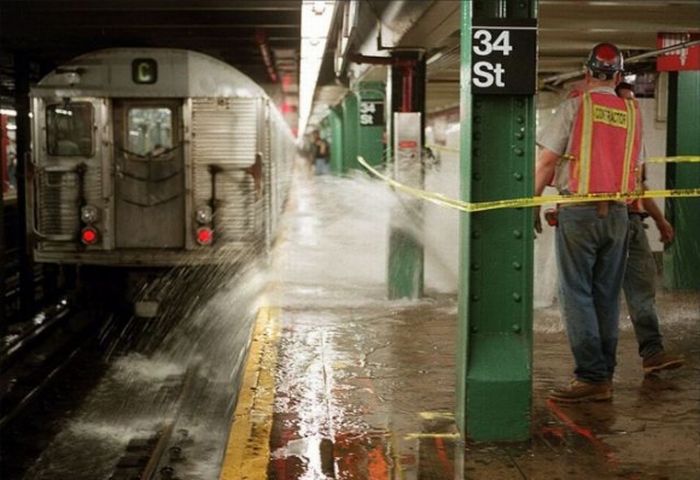|
|
History: The New York City Subway, United States
|
- Three four-track express stations have an island platform for the center express tracks and two side platforms for the outside local tracks. These three stations are connected to major railway stations and the next station along the line is also an express station with the more common platform configuration. The purpose of splitting the platforms is to limit overcrowding by preventing cross-platform interchanges between local and express services. This occurs at Atlantic Avenue on the IRT Eastern Parkway Line (2 3 4 5 trains) with the adjacent express station Nevins Street, where the connection is to the Atlantic Terminal of the Long Island Rail Road; and 34th Street – Penn Station on both the IRT Broadway – Seventh Avenue Line (1 2 3 trains) and IND Eighth Avenue Line (A C E trains), with adjacent express stations at Times Square – 42nd Street and 42nd Street – Port Authority Bus Terminal, where a connection is available to Pennsylvania Station, one of the two major Manhattan train stations. This does not occur with the connection to New York's other major station, Grand Central Terminal, at Grand Central on the IRT Lexington Avenue Line (4 5 6 <6> trains), which has no adjacent express station.
There is one notable 6-track local station, DeKalb Avenue, where trains to or from the Manhattan Bridge (B D Q) either stop at the outer tracks of one of the island platforms, or pass through and bypass the station on the middle tracks ("express tracks") (D N). Trains to or from the Montague Street Tunnel (N R) stop across the platform from the respective outer track.
• Artwork
Many stations are decorated with intricate ceramic tile work, some of it dating back to 1904 when the subway first opened. The subway tile artwork tradition continues today. The "Arts for Transit" program oversees art in the subway system. Permanent installations, such as sculpture, mosaics, and murals; photographs displayed in lightboxes, and musicians performing in stations encourage people to use mass transit. In addition, commissioned art displayed in stations and "art cards", some displaying poetry, are in many of the trains themselves in unused advertisement fixture slots. Some of the art is by internationally known artists such as Elizabeth Murray's Blooming, displayed at Lexington Avenue / 59th Street station.
|
|









